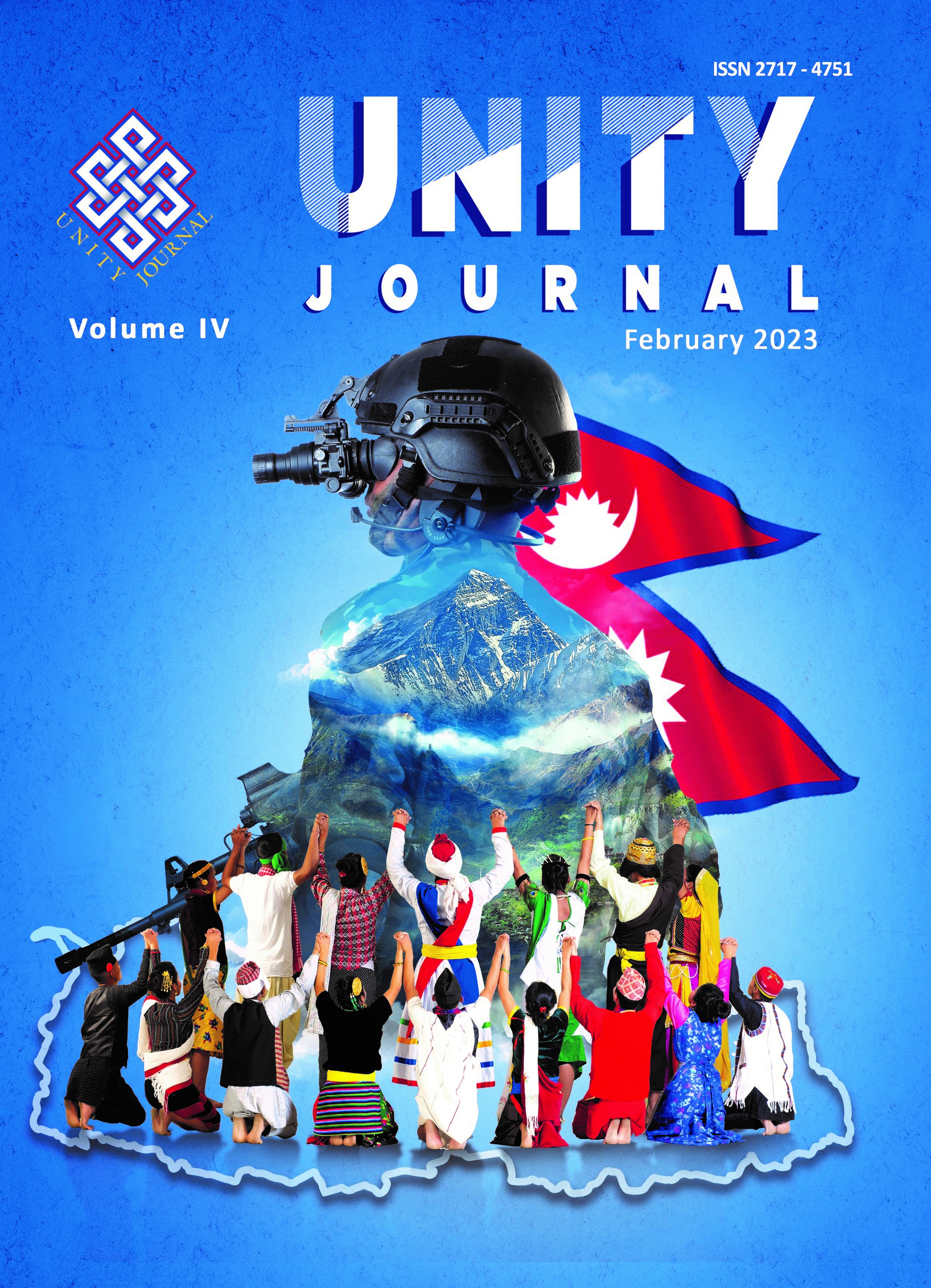Navigating China’s Military Modernization
DOI:
https://doi.org/10.3126/unityj.v4i01.52229Keywords:
national security interest, technological advancement, degree of competition, military transformation, security dilemmaAbstract
Nepal has repeatedly experienced the lurching effects of the increased tension between China and India. Consequently, both countries have engaged in rigorous military modernization and securitization techniques. The emerging context has posed a question of how Nepal can adopt a military strategy. The capacity of a small power to curtail the reeling effect of the tension between the great power depends on its security preparedness policy. Historical military strategists require any country (powerful or weak) to conduct meticulous research about the opponent or the potential opponents’ military strength before devising any military defense or offense. Acknowledging India’s dominant position in the region and its overwhelming military engagement with the small powers in South Asia, the scholarly discourse on India’s military capacity is voluminous. However, only a few studies have examined China’s military modernization in the new era under President Xi Jinping and what it connotes to the small powers in the south. In this regard, the paper conducted a detailed analysis of China's military transformation under President Xi Jinping. The findings show that China's military organization has adopted a centralized reform mechanism, and its armed forces have been equipped with advanced technological ammunition to build a “World Class Army.” Such a powerful buildup in the northern front makes it imperative for Nepal to rethink its security preparedness policy to deter the spillover effect of the conflict between the great powers in the region or beyond.
Downloads
Downloads
Published
How to Cite
Issue
Section
License
The articles rest within the authority of the Nepali Army. Only with the Nepali Army's prior permission, can any article in whole or in part from this journal shall be reproduced in any form.

